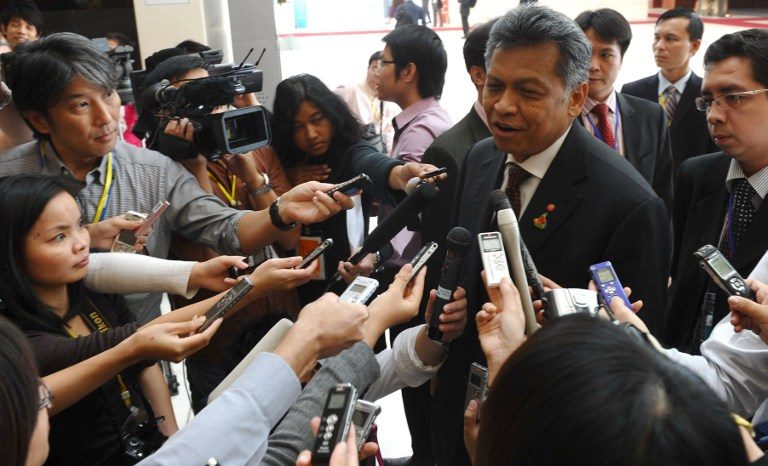SUMMARY
This is AI generated summarization, which may have errors. For context, always refer to the full article.

ASEAN. Journalists and editors might love it, hate it – or flee from covering it. But it is around to stay, so we might as well know the beast better, so to speak.
This year, 2017, offers more the usual amount of news pegs to covering issues and events related to ASEAN. ASEAN marks its 50th birthday this year. It is the turn of the Philippines, whose new government has made key shifts in its foreign policy, to chair ASEAN during this golden year. The South China Sea disputes raise the question of how ASEAN can deal with it without breaking apart.
And the backdrop for all these: The ASEAN Community has just turned one year old, but did anyone notice?
Here are some tips for framing reporting around ASEAN issues – and enjoying the storytelling too.
1. Redefine what ‘ASEAN news’ is. ASEAN summitry is a magnet for media coverage, but it is only one facet of the story. In a sense, summits are the easiest events to cover – one wonders how useful it is to be locked in the media room anyway, to watch a summit on close-circuit TV.
Look beyond ASEAN events around high-profile summits, (mostly) men in suits, and state pronouncements. While summit-shaped stories that look into how declarations are decided, what language was changed, pushed or objected to, say a lot, the story is not complete because the impact of ASEAN’s decisions are to be seen and felt outside the airconditioned summit venues. Frame a story by asking what our audiences need to know and investigate from there, instead of getting stuck only in what the heads of state and ministers said. ASEAN is often faulted for being a talkshop – but could this also be because media themselves take the easy way and cover, judge ASEAN only by its declarations and do not go beyond the summit corridors to cover these from the ground?
2. Whose ASEAN? This isn’t a rhetorical question, but a news one. Perspective is everything. But ASEAN stories are dominated by the voices of heads of states, ministers or diplomats, and at times, think tanks and civil society, but lack those of citizens affected by ASEAN’s policies or decisions. Talking to other sources, such as business people and others affected by ASEAN’s work, makes it a multi-sourced story and gives it a human face – and helps hold ASEAN and its member states accountable at the everyday-life level. If ASEAN’s ultimate goal is the improvement of its citizens’ lives, we should hear from those who are meant to reap the dividends of integration. Editorially, they are often a missing link in stories.
3. ASEAN-related stories aren’t only for foreign-policy junkies. As ASEAN carries out its regional integration experiment, it is no longer just a foreign-policy story that falls neatly into the ambit of the foreign office beat. Because the ASEAN Community touches on the political, security and socio-cultural spheres, it is fair game for journalists in other beats as well. It can be a labor rights story, a culture story, a political story, or a mix of several angles. Regional ASEAN issues easily cross the traditional division of news in newsrooms, and require a broader-viewed news approach.

4. Break ASEAN down. ASEAN can be many things or nothing to media audiences. As a news topic, it is not possible or pragmatic to cover all of ASEAN or the ASEAN Community, or any of its three pillars, in one go. So. collapse ASEAN’s work or declarations and action plans into digestible chunks by taking time to research and narrow the angle down to a story you can dig into instead of an over-arching topic. Does it work to pinpoint and analyse an ASEAN policy, point of disagreement, committee, document, action plan?
5. Avoid getting swallowed by the news pack. The bustle of events at ASEAN ministerial meetings and summits has a way of making journalists feel they are being scooped if they don’t go to every briefing or be part of as many ambush interviews. Some of the information and soundbytes from these will indeed be very useful, but get back to the center of your journalistic being, stay focused and grounded in the angles you came to develop. Step back from the din of soundbytes and examine what’s different, what changed from the past, what disappeared or was added onto an ASEAN document, or identify what could be a story to follow up after summits.
6. Translate ASEANspeak. Media stories bridge policy and everyday lives. The most effective ones relating to ASEAN and foreign policy are able to translate diplomatese and big concepts into everyday language that is equally accurate and faithful to their nuances. Develop this skill to not only relay to your audience what others said, but to provide perspective and explain critically the reasons and implications of an ASEAN-related issue, ASEAN ways of working and processes. And no, producing stories peppered with alphabet soups of acronyms, which ASEAN has a penchant for, do not impress.
7. Know what ASEAN is – and isn’t. Junk the misperceptions about ASEAN that have led many a journalist astray. ASEAN is an association and grouping of nation-states. Thus, it cannot be different from the governments that comprise it. It is not supragovernmental; it is not an Asian United Nations and does not pass judgement or rate member states. From its creation, and with the ASEAN Charter that entered into force in 2008, ASEAN was not meant to formally settle inter-country disputes. Beware the pitfall of holding ASEAN up to a “role” it was not meant to do and then criticizing it for its ‘failure’ in that area.
8. Don’t rely on the ASEAN bureaucracy for your ASEAN story. It is not second nature to the ASEAN bureaucracy and member states, even their public affairs offices, to tell journalists what they want or need to know to relay to their publics. They might not even say much even if you wanted to give them space. This mentality is part of why the ASEAN secretariat does not have a spokesperson, and will never have one. So while ASEAN may be a source of information – and sometimes quite needed – develop other sources like those in ministries apart from the foreign office, researchers and think tanks, statistical centers,
9. Read, read, and read. A journalist needs to know something well enough to tell a story about it, and the same goes for ASEAN issues. Learn how to read and interpret ASEAN documents – yes, even those ASEAN Community blueprints, so you can identify your concrete story angles. With this degree of confidence comes the ability to pick up the scent of a story and a fresh angle, ask better questions and generate sound analyses. Covering ASEAN is an investment over time, instead of from a few ASEAN meetings and documents. – Rappler.com
Johanna Son is the Bangkok-based editor and founder of the Reporting ASEAN media program, hosted by Probe Media Foundation Inc. A journalist for over two decades and former director of IPS Asia-Pacific news, she has covered ASEAN and regional issues, foreign policy and development, designed media capacity-building programs and edited books.
Add a comment
How does this make you feel?
There are no comments yet. Add your comment to start the conversation.